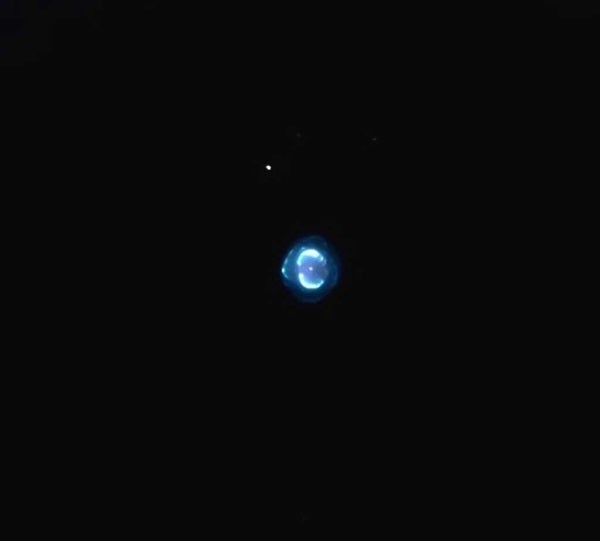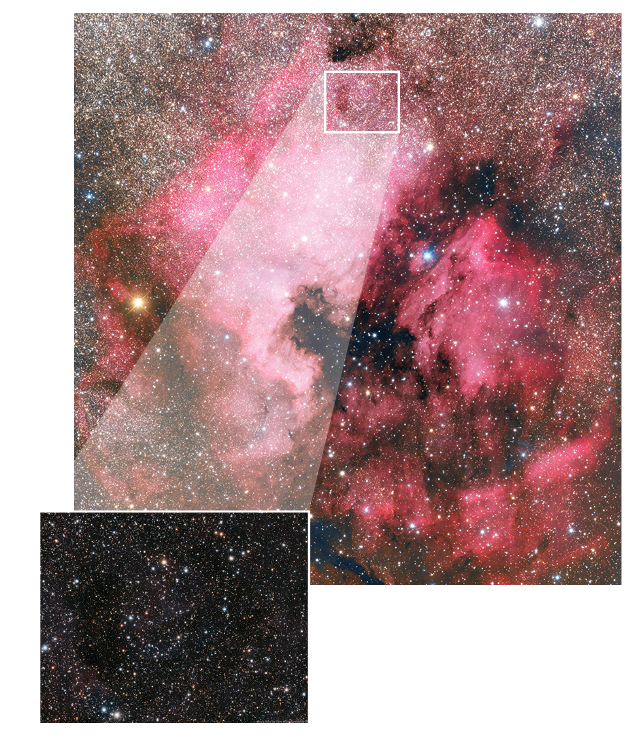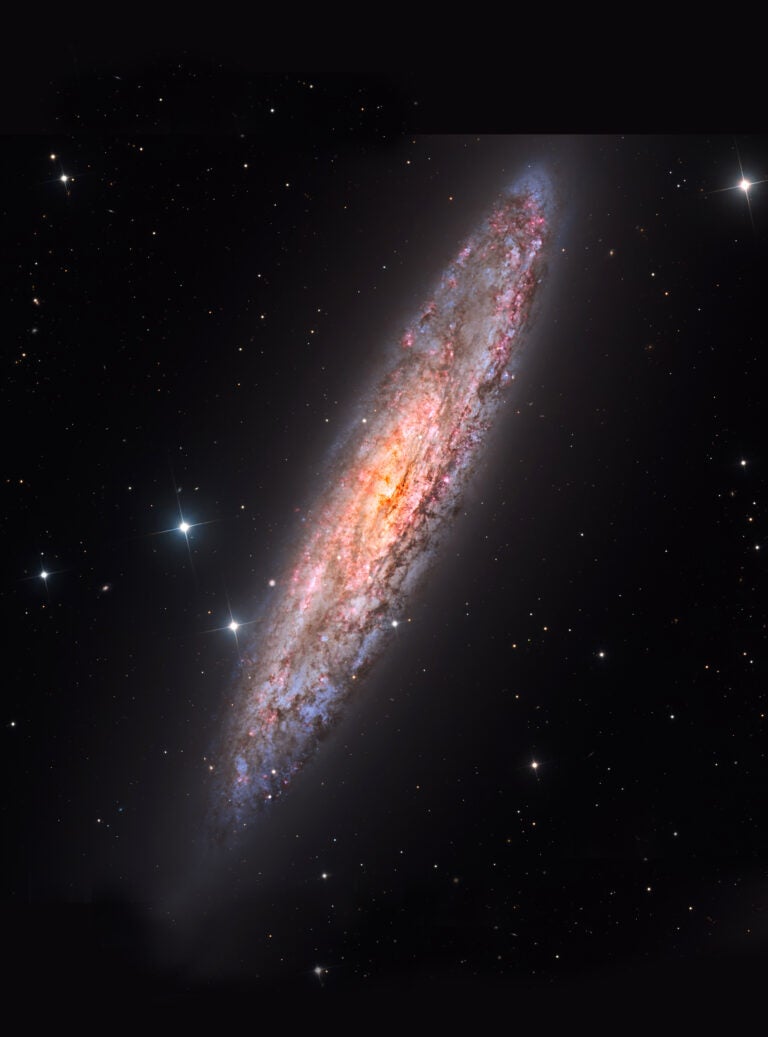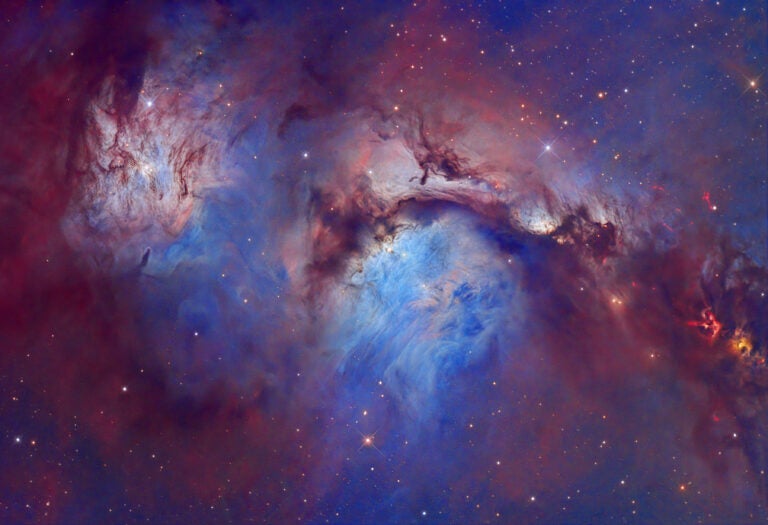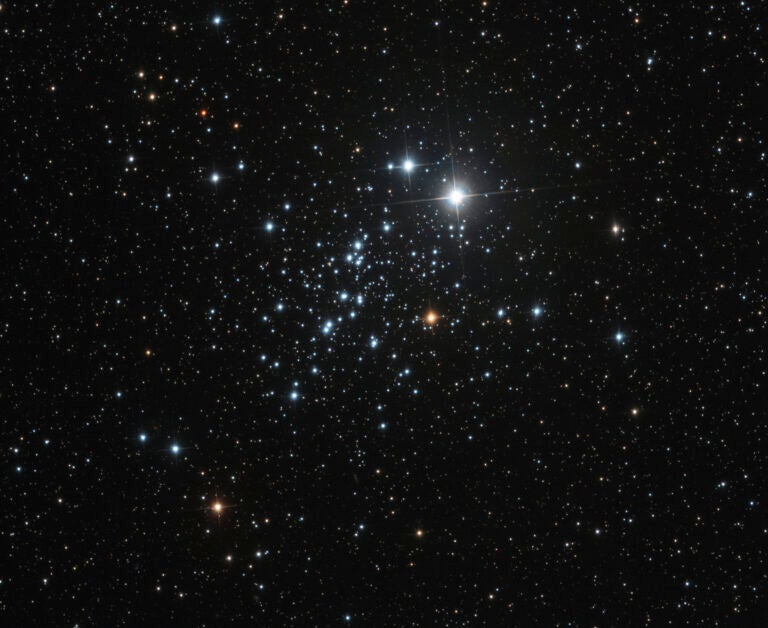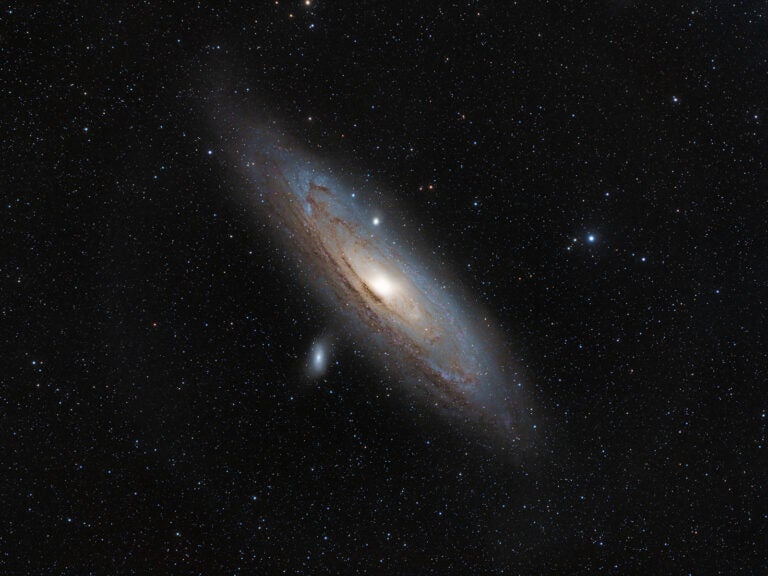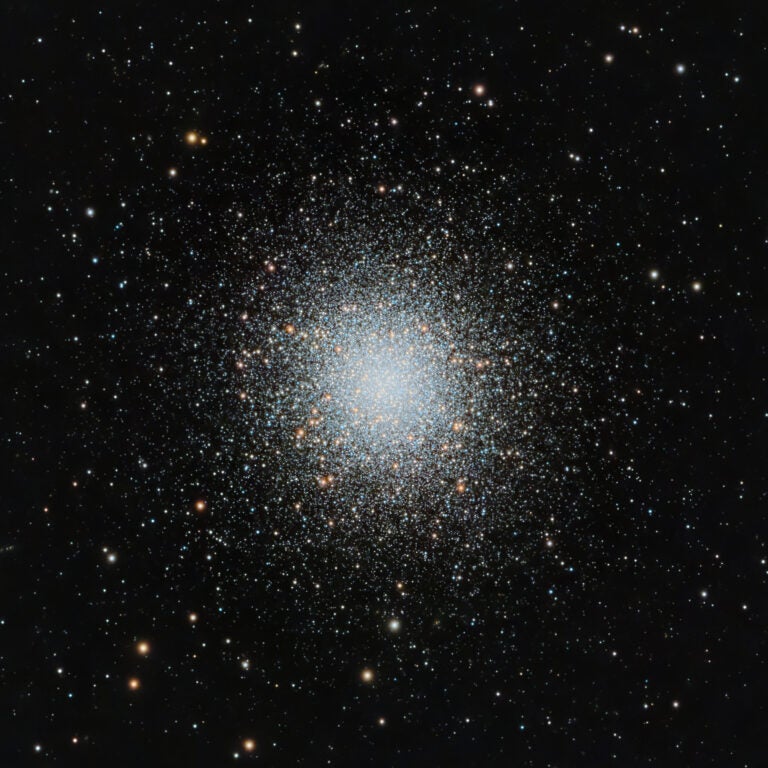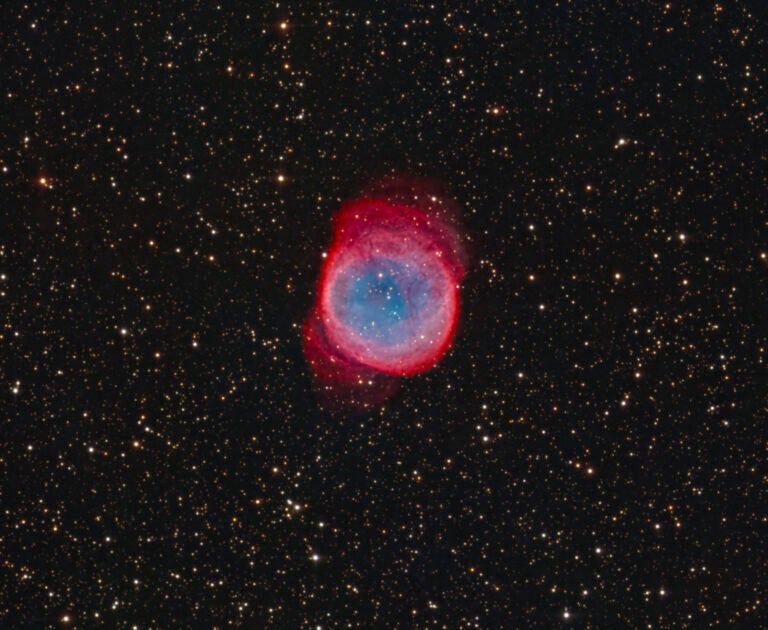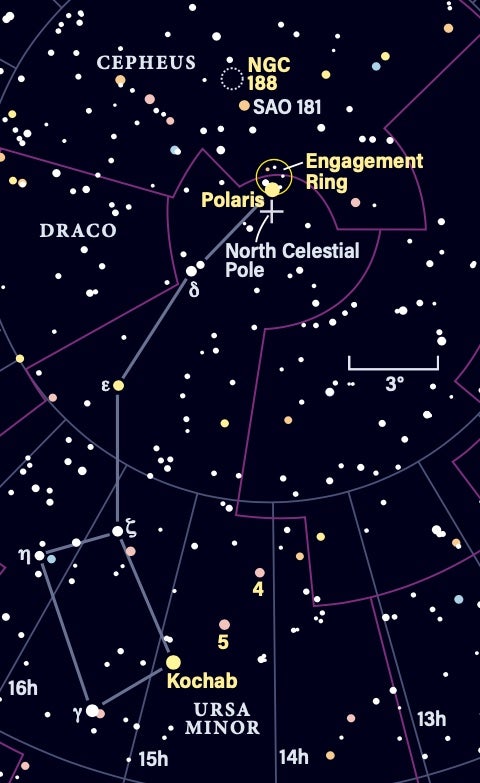
Most of us pay much less attention to the far northern night sky than we should because it lacks bright stars and Messier objects. However, that in attention causes us to miss out on some interesting targets every night, year-round. Here are a few to tempt you to look north.
We can’t go farther north than Polaris [Alpha (α) Ursae Minoris] at the tip of the Little Bear’s tail — or the end of the Little Dipper’s handle, if you prefer. Many people are familiar with Polaris, although some incorrectly believe it’s the brightest star in the night sky. That designation belongs to Sirius (Alpha Canis Majoris), while Polaris is 48th brightest. What makes Polaris so famous is its position, just 0.7° from the North Celestial Pole, earning it the nickname the North Star.
Because Earth’s rotational axis wobbles, that star is getting closer: Polaris and the North Celestial Pole will continue to close to within some 27′ of each other in the year 2100 before beginning to separate again.
If you aim your binoculars at Polaris, you will notice that it is the brightest member of a circlet of stars about half a degree across. At 2nd magnitude, Polaris really stands out among the others, which shine between 7th and 8th magnitude. The late Robert Burnham, Jr., was the first to notice this asterism. In his classic Burnham’s Celestial Handbook, he describes it as the Engagement Ring, with “Polaris itself sparkling as the celestial solitaire of the ring.”
Next, shift from Polaris to Kochab (Beta [β] Ursae Minoris) at the outer rim of the Little Dipper’s bowl. Kochab is a type K star, giving it a yellowish tint through binoculars. Then glance 2° to its northwest to see a second, fainter yellow star. That’s 4th-magnitude 5 Ursae Minoris. In his voluminous (and free) online tome, 2000+: The Advanced Amateur Astronomer’s Field Guide to Deep Sky Observing Database & Sky Atlas (www.1000plus.com/2000plus), the late North Carolina observer and author Tomm Lorenzin described the golden pair as “a double ‘caution light’ in binoculars.” Look carefully with averted vision and you just might notice that 5 UMi also has a faint companion.
Actually, there are three caution lights if we include 5th-magnitude 4 Ursae Minoris, found 2° farther northwest. If you defocus your binoculars slightly, the colors may be accentuated.
Ready for a challenge? While most open star clusters lie along the plane of our Milky Way, northernmost Cepheus holds an out-of-place cluster that is barely visible through my 16×70 binoculars on the clearest, darkest nights. I imagine that John Herschel, son of William Hershel, was quite surprised to discover this rogue object on Nov. 3, 1831. Now cataloged as NGC 188, this lonely cluster resides just over 4° from Polaris and only 1° south-southwest from the 4th-magnitude star SAO 181.
Some 130 stars ranging from 10th to 17th magnitude call NGC 188 home. Together, they blend into an 8th-magnitude glow spanning about ¼°. The cluster’s low surface brightness, however, makes it a difficult challenge in binoculars and smaller telescopes alike. If I aim my 25×100 binoculars its way, a couple of its dim stars pop into view.
NGC 188 is also noteworthy for its age. Formed at about the same time as our solar system, it is the second oldest open star cluster north of the celestial equator. Only NGC 6791 in Lyra is older.
As you can see, there are a variety of binocular targets that are up every night of the year, lying in wait in the north circumpolar sky.
I am sorry to say that this is my final Binocular Universe column in Astronomy magazine. I hope you have enjoyed the journeys that we have shared over the past eight years, and that you will continue to tour the universe through binoculars far into the future. Let’s keep in touch. Drop me a line through my website, philharrington.net, or join me on Facebook (@phil.harrington.author). And until we meet again, always remember that two eyes are better than one.

